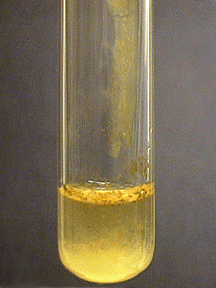
Manganese, Mn2+
Most common oxidation states: +2, +7; +3, +4, and +6 also exist.
M.P. 1244o
B.P. 1962o
Density 7.43 g/cm3
Characteristics: Gray or reddish-white metal. Very hard and brittle. Very similar to iron in activity. Dissolves readily in dilute acids.
Characteristic reactions of Mn2+:
Aqueous Ammonia:
Addition of aqueous ammonia precipitates white Mn(OH)2:

The precipitate does not dissolve in excess ammonia, but does dissolve in solutions containing ammonium salts. The precipitate is easily oxidized by atmospheric oxygen to form Mn(III) or Mn(IV), which turns the precipitate a brownish color.
Sodium Hydroxide:
Sodium hydroxide precipitates manganese(II) hydroxide:
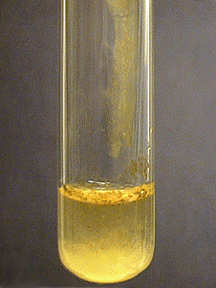
Hydrogen Peroxide:
In basic solutions, H2O2 oxidizes Mn(II) to Mn(IV), giving a brown precipitate:
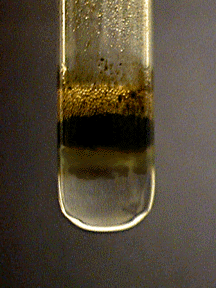
MnO2 is generally insoluble in acids, but does react with hot concentrated hydrochloric acid to release chlorine gas. In acid solution, H2O2 becomes a reducing agent, and the MnO2 will dissolve:
MnO2(s) + H2O2(aq) + 2H+(aq) --> Mn2+(aq) + O2(g) + 2H2O(l)
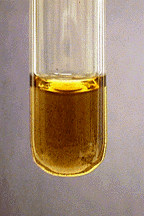
Sodium Bismuthate:
Solid sodium bismuthate oxidizes Mn2+ to purple MnO4- without heating. With heating, the product is MnO2.
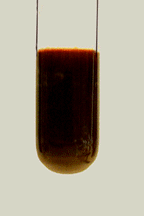
No Reaction:
Cl-, SO42-